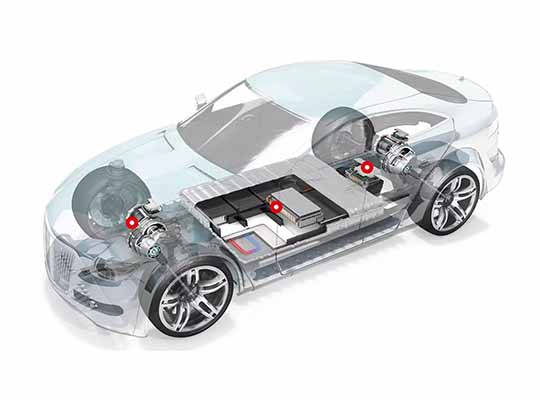The report “Electric Vehicle Adhesives Market by Application (Powertrain System, Optical Element, Sensors & Communication, Body Frame), Resin Type (Epoxy, Polyurethane, Silicone, Acrylic), Substrate, Form, Vehicle Type, and Region – Global Forecast 2027″, size is estimated to be USD 1.4 billion in 2022 and is projected to reach USD 7.6 billion by 2027, at a CAGR of 39.4% between 2022 and 2027.
Rising trade tensions between the US and China, as well as low labor costs in China, have convinced many adhesive end-users to relocate and establish production plants in Asian countries. This relocation is predicted to drive adhesive demand in Asian countries. India offers low-cost labor, which can lead to significant investment opportunities for businesses. Government initiatives like “Make in India” and the proposed entrepreneurship development scheme by the government may create extra opportunities in the industrial and infrastructure construction sectors. The market in Asia Pacific is expected to be propelled by all these factors. The increasing demand for EVs in China and other countries is expected to drive growth in the region, which is expected to ensure the development of Electric Vehicle Adhesives Market in Asia Pacific. In terms of volume, the market in the region is expected to grow at a CAGR of 40.0% during the forecast period.
By application, Body Frame account for the largest share in the EV Adhesives Market
In terms of value, the body frame segment accounted for the largest market share of 63.3% of the overall EV adhesives market, in 2021. Asia Pacific is the largest market in the body frame segment due to the rising use of adhesives in the interior applications, along with the increasing electric car production in the region. There are many components in a vehicle that plays an important role in the body frame of the vehicle. The body and chassis structural parts are used to make the basic structure of the vehicle. The body is a collection of components that together form the structure that supports the vehicle (frame) and protects the driver and passengers. The “skin” parts, which are used to make the visible outer skin of the vehicle, are also part of the body. On the other hand, the vehicle’s chassis works as the support system for lots of parts and components that comprise the vehicle.
By resin type, Polyurethane account for the largest share in the EV Adhesives Market
The polyurethane-based EV adhesive segment accounted for the largest share of 35.8% of the overall EV adhesives market, in terms of value, and it is projected to register a CAGR of 38.9% between 2022 and 2027. Asia Pacific is expected to lead the polyurethane-based adhesives market during the forecast period. During the forecast period, the use of adhesives in EVs is predicted to increase. Various types of adhesives derived from resins, such as epoxy, polyurethane, silicone, and acrylic, are necessary for various applications of EV adhesives. Adhesives derived from various resins have different properties and are chosen based on the application.
Polyurethane adhesives are made of urethane polymers. They have extraordinary elasticity and elongation up to 600% before fracture. Two-component polyurethane, one-component rigid polyurethane adhesives, and two-component elastic polyurethane adhesives are the three types of polyurethane adhesives. The bonds of polyurethane adhesives are developed in two stages: firstly, the adhesive cools back down to reach the holding strength and, secondly, the adhesive utilizes the moisture to keep on curing for hours to days to reach the final structural strength.
Asia Pacific accounted for the largest share of the Electric Vehicle Adhesives Market in 2021, followed by North America and Europe. The rising trade war tensions between the US and China and low labor costs in China have forced many end-users of adhesives to shift and establish their production facilities in the Asian countries. This relocation is expected to increase the demand for adhesives in the Asian countries. Low-cost labor are offered by India, which can provide significant investment opportunities for manufacturers. Government initiatives such as “Make in India” and the proposed scheme on entrepreneurship development by the government may offer further opportunities in the industrial and infrastructure construction segments. All these factors are expected to drive the market in APAC.
The leading players in the Electric Vehicle Adhesives Market are Henkel AG & Co. KGaA (Germany), H.B. Fuller (US), Sika AG (Switzerland), 3M (US), Wacker Chemie AG (Germany), Arkema S.A. (France), Ashland Inc. (US), PPG Industries (US), Parker Hannifin Corporation (US), and Illinois Tool Works Inc. (US).











